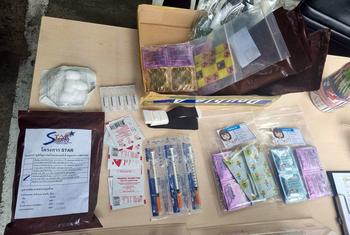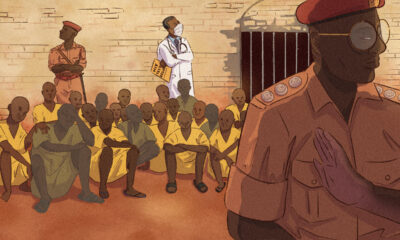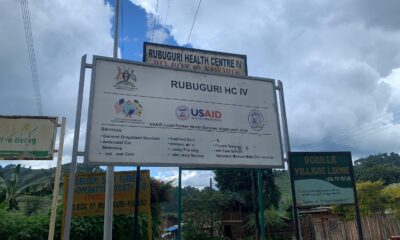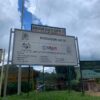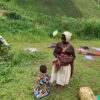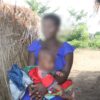Health
Closing the Gap: tackling inequalities in Pediatric HIV care in Uganda
For more than a decade, the ongoing effort to combat HIV/AIDS among children in Uganda has been steadfast, employing various strategies such as preventing the vertical transmission of HIV, ensuring early identification and timely initiation of treatment for children living with HIV, and providing support to keep them engaged in HIV care.
As a result, there has been a significant decrease in new pediatric infections and HIV/AIDS-related deaths, accompanied by an increase in treatment coverage for children. Despite this commendable progress, Uganda still faces challenges in achieving the ambitious goal of eliminating AIDS as a public health issue among children, primarily due to substantial inequalities within this demographic and across specific districts in the country.
Over the past five years, vertical transmission rates have plateaued, contributing to a crisis in pediatric HIV response alongside maternal treatment. The country is currently grappling with a high number of infections among adolescent girls and children, coupled with slowed identification and treatment coverage for children and adolescents living with HIV.
Shockingly, almost one-third of all children living with HIV remain undiagnosed, depriving them of life-saving treatment. Vertical transmission continues to account for about 14% of all estimated new HIV infections. Every day, an estimated 16 children are born with the virus, facing significant health and well-being challenges from the very start of their lives.
Further analysis reveals that 56% of new vertical infections in 2022 occurred during the breastfeeding period, while 44% occurred during pregnancy. Additionally, 84% of all new pediatric infections resulted from incident infections during late pregnancy and breastfeeding, women abandoning treatment, and a lack of access to treatment.
Contemporarily, new HIV infections persist at higher rates among adolescent girls and young women, partly fueled by inequities hindering their access to HIV services. In 2022, four in ten HIV infections occurred among adolescent girls, with 15,000 new HIV infections out of 20,000 among young people being adolescent girls, representing four in every five cases.
This HIV and AIDS outlook, coupled with a high adolescent pregnancy rate, is driven by intersecting forms of inequalities, including gender and socio-economic disparities, necessitating a multisectoral approach that places communities at the center and is driven by strategic partnerships.
On a global scale, UNICEF’s latest Global Snapshot on Children with HIV and AIDS reveals that nearly 98,000 adolescent girls aged 10-19 were infected with HIV in 2022, translating to 1,900 new infections every week. While infections among girls aged 10-19 have almost halved since 2010, girls were still more than twice as likely to contract HIV compared to boys last year. Globally, there were 270,000 new HIV infections among all children and adolescents aged 0-19 in 2022, bringing the total number of young people living with HIV to 2.6 million.
UNICEF’s Associate Director of HIV/AIDS, Anurita Bains, expressed concern, stating, “It is unacceptable that adolescent girls, who should be planning their futures, continue to bear the heaviest burden of HIV infection.” Urgent action is needed to eliminate obstacles threatening the health and well-being of adolescent girls, including ensuring their sexual and reproductive health and rights are met.
Girls continue to bear the brunt of the HIV epidemic due, in part, to gender inequalities, disempowering them to negotiate safe sex, poverty leading to communities being located far from healthcare centers, and a lack of access to HIV prevention and sexual and reproductive health programs.
In sub-Saharan Africa, HIV prevalence among adolescent girls and young women aged 10-24 persists at over three times higher than among their male counterparts. The data shows that Eastern and Southern Africa carries the overwhelming burden of HIV infection, with 137,000 new infections among the 0-19 age group in 2022, followed by West and Central Africa (66,000 new infections among 0-19), East Asia and the Pacific (21,600 new infections 0-19), Latin America and the Caribbean (16,300 new infections 0-19), and South Asia (14,400 new infections 0-19).
The Global Snapshot further underscores the considerable inequities faced by children and young adolescents regarding access to treatment, with nearly one million people aged 0-19 living with HIV globally not receiving treatment. Approximately 60% of this group is in Eastern and Southern Africa.
Challenges such as cumbersome diagnostic processes for children, specific testing requirements for infants not always available in middle- and lower-income countries, and a lack of age-appropriate antiretroviral medication for younger age groups contribute to the fact that only 57% of children aged 0–14 years are receiving antiretroviral treatment, compared to 77% of those aged 15 and above.
Despite progress toward ending AIDS, the pace remains slow, with 99,000 children and adolescents aged 0-19 years globally dying in 2022 due to AIDS-related causes, accounting for 15% of all AIDS-related deaths. This age group comprises just 7% of people living with HIV. Urgent and targeted efforts are essential to address these challenges and accelerate progress toward ending AIDS among children and adolescents globally.
Today, Uganda joins the rest of the world to commemorate World AIDS Day under the global theme; “Let communities lead“. Uganda’s commemorations at Rakai District are held under the theme; “Ending AIDS by 2030. Keeping Communities at the Centre.”



